In their hunger for US funding, Nicaraguan “human rights” NGO’s inflated the death toll during last year’s coup. Today, these groups are in a state of complete disarray.
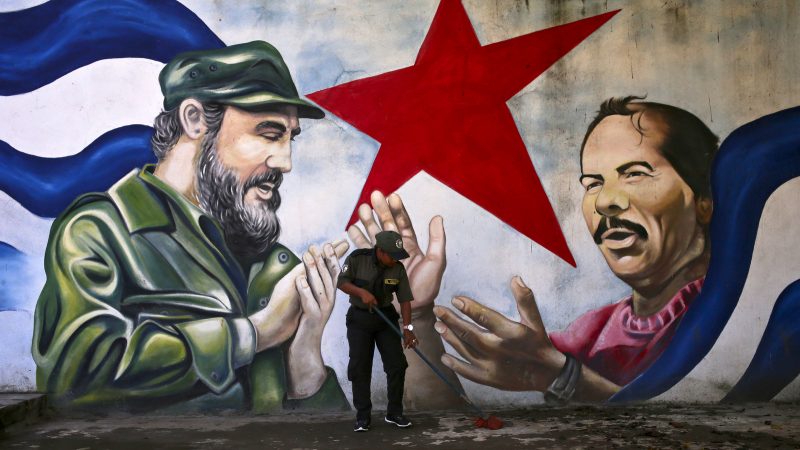
When political conflict results in people being killed – especially at the hands of a government – the deaths are not just personal tragedies, they become fodder for that government’s foes. This dynamic unfolded during last year’s attempted coup in Nicaragua, when the opposition tried and failed to bring down the elected government of President Daniel Ortega through a nationwide campaign of protest and violent sabotage.
When the regime change attempt was finally halted in July 2018, the opposition alleged through a triad of “human rights” NGO’s that the government had killed anywhere from 325 to 500 protesters.
This death toll was repeated in practically every international media report, on the floor of the US Congress, and in the halls of the Organization of American States, all to drum up support for sanctioning the Nicaraguan government.
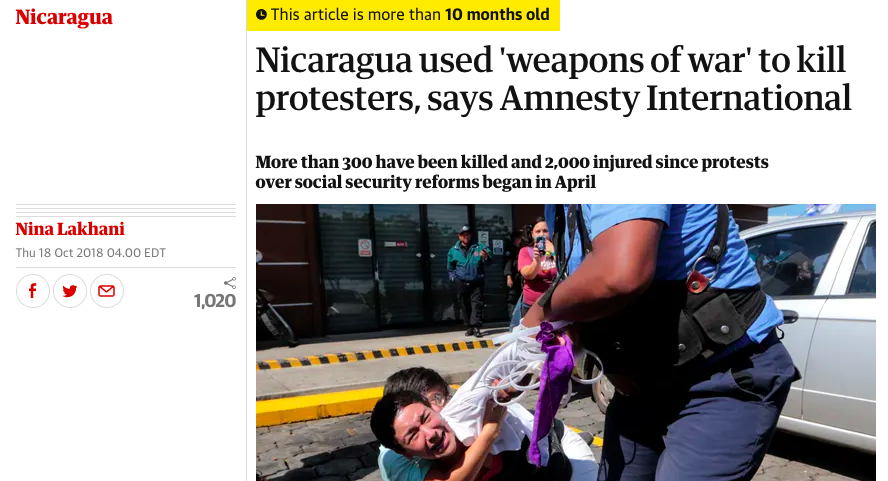
The Guardian was among papers that reported now-discredited death counts without a shred of skepticism.
But a year later, the ‘human rights’ outfits whose reports generated these numbers have started to fall apart. And as their US funding dries up, their former staffers have begun to reveal the truth about their dubious data.
The Grayzone reported last month on the dramatic break-up of the Nicaragua Association for Human Rights (ANPDH), an opposition NGO whose board of directors confessed to exaggerating the death toll in order to rake in more US government money.
In a press conference this July that was totally ignored by corporate media, ANPDH ex-director Gustavo Bermúdez accused his former boss, Álvaro Leiva, of having “inflated the death toll.”
Bermúdez said, “We personally asked him where you got that figure; a friend called me saying to please get his grandmother who died of a heart attack off the list of people who were supposedly victims of the repression.”
But ANPDH group is only one part of a sizable human rights industry in Nicaragua that has functioned as a weapon of regime-change, putting politics over professionalism in order to secure their maximalist goals.
And now that the coup they participated in has failed, their network is collapsing and their directors are positioned in a circular firing squad.
The opposition’s propaganda machine
Until recently, three local bodies claimed to monitor human rights, all doing so with foreign funding.
Their work complimented regular reports by international bodies such as Amnesty International and Human Rights Watch (HRW), and frequent interventions by the Inter-American Commission on Human Rights (IACHR) and the UN Commission for Human Rights (UNCHR). Meanwhile, the Nicaraguan government operated own human rights office.
Though the international bodies have enormous resources, the three small local bodies have had a disproportionate influence on them.
The oldest local NGO, the Permanent Commission on Human Rights (CPDH for its initials in Spanish) dates from before Nicaragua’s 1979 revolution, and receives funding from the US regime-change outfit, the National Endowment for Democracy (NED).
For its part, the Nicaragua Association for Human Rights (ANPDH) was set up in Miami with $3 million from the Reagan administration in the 1980s, with the aim of whitewashing the violence of the US-backed ‘Contra’ forces that were attempting to overthrow the Sandinista government.
The third of these opposition NGO’s is CENIDH, or the Nicaraguan Center for Human Rights. This group was set up with European funding in 1990, and is headed by an ex-FSLN member, Vilma Nuñez de Escorcia, who is one of the founders of the opposition MRS party.
None of these three bodies have made any attempt at political neutrality. Indeed, all were opposed to the Sandinista government well before last year’s coup attempt. But when the overthrow attempt began last April, they became a key part of the opposition’s propaganda machine.
CENIDH and ANPDH, in particular, published regular reports whose bias is made obvious by the language: CENIDH, for example, referred to the Nicaraguan government, elected in 2016, as the ‘dictatorial regime’ of Daniel Ortega and (vice-president) Rosario Murillo.
This group’s initial report, issued on May 4, immediately exaggerated the numbers of deaths by recording six fatalities on the first day of the violence (April 19), all but one attributed to the government, when in fact there were only three: a police officer, a Sandinista defending a town hall from attack, and an uninvolved bystander. By late July, CENIDH’s fifth report logged 302 deaths, all attributed to “state terrorism.”
By the same date, ANPDH was reporting no less than 448 deaths in ‘civic protests’, a figure repeated by the BBC, MSN, news sources across the West and the United Nations Human Rights Council. By early September, ANPDH’s death count had reached 481, of which 455 were listed as “homicides.”
ANPDH director Álvaro Leiva categorized the deaths with remarkable confidence and specificity: 152 died in “random executions,” Leiva claimed, while 116 were killed in “planned executions,” 86 in “disproportionate” clashes between government forces and civilians, 57 in “selective executions,” 36 deaths “appear to be planned and executed by hooded and armed paramilitaries,” and only eight were unexplained.
By the end of the same month in which there was very little violence, ANPDH’s death toll – all blamed on the government – had reached 512. According to ANPDH, a further 1,300 people had “disappeared.”
By early July last year, the accounts published by the ‘human rights’ bodies had already started to unravel. Enrique Hendrix, a resident of Managua, went systematically through the death counts to produce a report he called Monopolizing death: Or how to frame a government by inflating a list of the dead.
By identifying each victim, he was able to spot double-counting and in most cases, determine the real cause of death. Hendrix found, for example, that CENIDH’s list included a suicide, traffic accidents and various duplications or unexplained deaths.
Of the 167 deaths included in their early reports, just 31% (51 people) were actually protesters who had died in the conflict. In the case of ANPDH, which by that stage had logged 285 deaths, only 20% (58) were confirmed as protesters.
A report released weeks later by the Nicaraguan National Assembly’s Truth Commission also found a huge gap between ANPDH’s figures and the real number of deaths arising from the conflict.
International “human rights” bodies echo opposition disinformation
Following the publication of Amnesty International’s unbalanced and poorly researched investigations of last year’s violence, a group of local researchers responded with a report called Dismissing the Truth.
This paper examined in detail the casualty lists produced by the ‘human rights’ bodies relating to the central zone of Nicaragua, where considerable violence occurred in and around the roadblocks set up by the opposition and guarded by people with weapons.
Through a case-by-case examination, the researchers found that of the 16 reported deaths that were confirmed as conflict-related, 15 were killed as the result of opposition action (the victims consisted of five police officers, six government supporters or workers, and five unaffiliated citizens).
For the 16th and final conflict-related death, responsibility was undetermined, and possibly was the result of crossfire.
In addition to these 16 deaths, ANPDH reported another 18 which, on investigation, were clearly not a result of the conflict. Causes of death included fights between armed opposition activists at roadblocks (e.g. over money), robberies, a road accident and two cases where names were duplicated.
In other words, more than half the deaths recorded by ANPDH were wrongly attributed to the conflict. Nevertheless, ANPDH gave the impression that all 34 deaths resulted from government violence, when the evidence showed that only one possibly did so.
Shockingly, evidence of malpractice and outright mendacity by by local “human rights” bodies was largely ignored by the international bodies monitoring the casualties from last year’s conflict.
The first report by the Organization of American States’ Inter American Commission on Human Rights (IACHR) listed 212 deaths, but Hendrix found only 25% of those (52 deaths) were actual protesters.
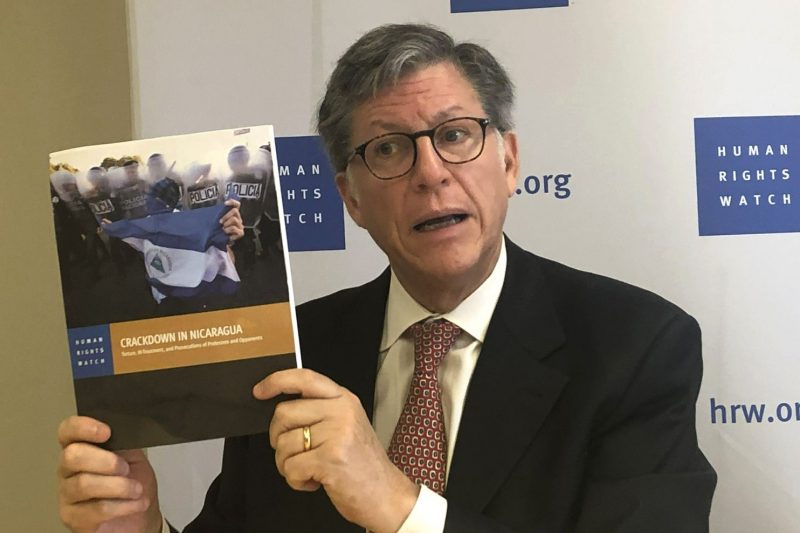
Nor did IACHR identify deaths which were opposition killings, thus giving the same impression as the local bodies that all, or most, of the deaths it counted were attributable to government repression.
By September, Amnesty International had pushed the death toll to 322, claiming that “most [occurred] at the hands of state agents.” It based its allegation on the counts by IACHR and the local bodies. Amnesty’s second report on the conflict absurdly condemned the government for “challenging the information put forward by human rights organizations,” as if they were above criticism and their casualty lists should have been accepted without a hint of skepticism.
Of course, the whole point of examining and challenging the lists was precisely because they were part of the propaganda drive against the Ortega government, referred to in practically every international media report on the crisis and cited as authoritative by international bodies, including detailed references to ANPDH by the UN Commission for Human Rights in its 2018 report on Nicaragua.
As late as last December, when the violence was months in the past, the IACHR’s secretary general Paulo Abrão was still denouncing Nicaragua as a “police state.”
In a session attended by all three local opposition bodies (CPDH, CENIDH and ANPDH), he said that “not a day goes by” when the IAHCR fails to receive a report of a human rights abuse from the country, presumably via those organizations.
Yet by February 2019, the Truth Commission was able to issue a final report on the death toll from the attempted coup which, after exhaustive analysis of the different sources, confirmed the total number of conflict-related deaths as 253 – less than half that claimed by ANPDH six months before.
Those deaths consisted of 31 known supporters of the opposition, 48 probable or actual Sandinista supporters, 22 police and the remainder (152) of unknown affiliation.
Things fall apart
But 2019 has turned out to be a bad year for the three ‘human rights’ bodies. ANPDH and CENIDH were found by the government to have violated their own statutes and their registration as NGOs was terminated. Some of their functionaries fled to Costa Rica. CPDH continues, but its lawyer, María Oviedo, was arrested recently when, in a visit to a police station in support of a leading opposition member who had been found to have an unregistered firearm, she slapped a police officer.
The officials of the other two bodies are fighting among themselves. When CENIDH director Gonzalo Carrión tried to open a new NGO in Costa Rica, he was denied support by ex-colleagues who feared he would pocket the foreign donations and use them for his own purposes.
The fate of the former staff members of ANPDH is most disturbing, however. The former general secretary, Álvaro Leiva, was given asylum in Costa Rica last October, a move welcomed by the IAHCR’s Paulo Abrão, who awarded him “protective measures” this June.
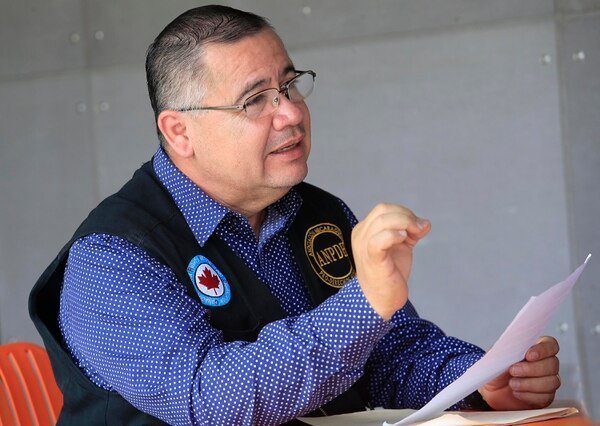
ANPDH board member and anti-Ortega activist Gustavo Bermúdez accused his group’s director, Álvaro Leiva, of embezzlement and fraud on a massive scale
However, as The Grayzone reported, when Leiva attempted to open a new NGO in Costa Rica, his former colleagues angrily accused him of appropriating funds supplied by US bodies such as the NED.
More importantly, they revealed that Leiva personally ordered them to inflate ANPDH’s casualty counts last year because he believed padding the death tolls would help secure extra funding from the US. ANPDH director Gustavo Bermúdez, in a press conference ignored by corporate media, said:
“Álvaro Leiva inflated the death toll. We personally asked him where you got that figure; a friend called me saying to please get his grandmother who died of a heart attack off the list of people who were supposedly victims of the repression.”
ANPDH received over $88,000 from the NED, and $348,000 from other US sources last year. CPDH received $180,000 from the NED in 2018 alone, out of NED spending of $1.8 million spent that year to promote Nicaragua’s opposition bodies.
Today I asked USAID’s Mark Green about the lethal violence of the opposition his agency backs in Nicaragua and the proximity of one the favorite US grantees, Felix Maradiaga, to armed elements. As expected, he totally ducked the question. #NicaraguaQuierePaz pic.twitter.com/Oc2UEYcLpB
— Max Blumenthal (@MaxBlumenthal) August 8, 2018
The NED and USAID clearly viewed Nicaraguan organizations working in the human rights field as one of the most crucial elements of Washington’s regime-change agenda. By incentivizing NGO’s to produce anti-government disinformation, the US set the stage for their public collapse of their credibility.
Critics of the Contras transform into soft coup supporters
Allen Weinstein, a founding member of the NED told the Washington Post in 1991, “A lot of what we do today was done covertly twenty-five years ago by the CIA.”
It is therefore hardly surprising that among the biggest recipients of NED funding in Latin America have been NGO’s operating in nations that John Bolton has labelled the “troika of tyranny”: Nicaragua, Cuba and Venezuela.
And while the NED dumped US money into supposedly neutral human rights bodies that functioned as regime-change weapons, the international media provided them with an uncritical platform for disseminating their propaganda without ever mentioning the source of their funding.
It was not always this way, however. Back in 1989, Human Rights Watch slammed ANPDH as “for all intents and purposes a US State Department funded arm of the Nicaraguan Resistance,” referring to the CIA-backed Contra forces fighting the Sandinista government.
The left-leaning political magazine Envío was also highly critical of both CPDH and ANPDH in the 1980s. It described Lino Hernández, then director of the CPDH, as coming from a “far right” background. Commenting on the $3 million ANPDH received from the US government, the magazine asked “What kind of human rights watchdogging has the ANPDH done with all this money? Hardly a whimper, much less a bark.”
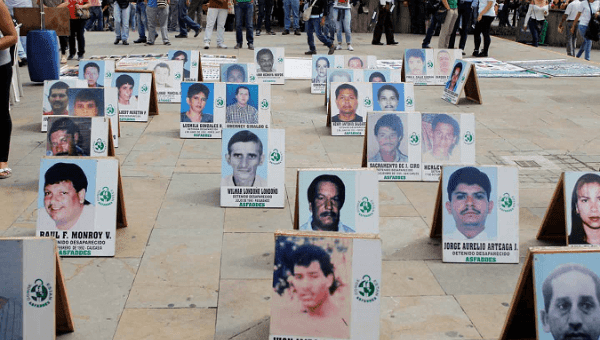
A NGO prominent at the time, the Catholic Institute for International Relations, pointed out that ANPDH did not even set up a Nicaragua office until after the Sandinistas left power in 1990.
In its report on a Contra attack in which women and a baby had its throat slit, ANPDH exonerated the Contra forces involved. Paul Laverty, a Nicaragua-based human rights lawyer, also strongly criticised CPDH for ignoring atrocities by the Contras.
Skepticism was not only reserved for the local “human rights” bodies. Envío was critical of Human Rights Watch and, even more so, of Amnesty International, accusing both of a “lack of thoroughness” and criticizing Amnesty for its “extremely sloppy investigation” and “unquestioning reliance” on reports from biased organizations like CPDH.
While working for Scottish Medical Aid for Nicaragua, Laverty published a damning critique of Amnesty’s assessment of human rights under the 1979-1990 Sandinista government, concluding that their accusations of harsh treatment of political prisoners were exaggerated or, at worst, entirely unfounded.
Thirty years later, critical thinking about the real role of Nicaraguan “human rights” NGO’s in stirring up regime-change is practically off limits. When ANPDH and CENIDH lost their NGO registration last year, HRW complained that, “Public officials repeatedly made stigmatizing statements to undermine the credibility of [human rights] defenders.”
As noted earlier, Amnesty does not even accept the Nicaraguan government’s right to analyze the death counts produced by human rights bodies.
Envío magazine, meanwhile, has become an unflinching critic of the Ortega government and supporter of CENIDH; Paul Laverty, now a screenwriter famous for his work with Ken Loach, has lent support to opposition members touring Europe to promote their anti-Sandinista message.
Raking in millions to advance empire
Meanwhile, human rights has become a lucrative and glitzy business. HRW, for example, has 450 staff members and a budget of over $90 million, while Amnesty’s global budget reaches almost $300 million.
While HRW relies heavily on the fortune of anti-communist billionaire George Soros, Amnesty gains much of its budget from small donations, and its need to maintain its profile has brought multiple criticisms of its “toxic” working culture.
Both organizations have been criticized for their alignment with US government policy in Latin America, where their attention focuses particularly on the countries in Bolton’s “troika of tyranny” while downplaying or ignoring the huge damage caused to people in those countries by US intervention. (AI’s most recent, 56-page report on Venezuela, Hunger for Justice, only has the briefest reference to US sanctions).
After this meeting, Amnesty issued a denunciatory report ignoring the US economic war on Venezuela and a statement supporting Trump’s interventionist “aid” sham. No surprise to seem them pumping up another R2P extravaganza against a regime change target. https://t.co/4hgayBhcPIhttps://t.co/mAfwqCzeM7
— Max Blumenthal (@MaxBlumenthal) February 21, 2019
In the case of Nicaragua, the local ‘human rights’ bodies provided HRW and AI with evidence that fit their own prejudices about the Ortega government. While these local bodies depended on publicity from HRW and AI to maintain credibility, they also needed to demonstrate to US government organizations like the NED that they were useful regime-change weapons.
Thanks to this toxic dynamic, CDPH, ANPDH and CENIDH are in complete disarray, and their former staffers are spilling the beans about the bogus death tolls they spun out to justify US funding. A year after they helped stoke a coup, the only regime that is changing is their own.
John Perry is a writer based in Masaya, Nicaragua whose work has appeared in the Nation, the London Review of Books, and many other publications.
This article was originally published by “Grayzone”
The 21st Century
https://i2.wp.com/thegrayzone.com/wp-content/uploads/2019/08/Screen-Shot-2019-08-25-at-12.45.29-AM.png?w=888&ssl=1
